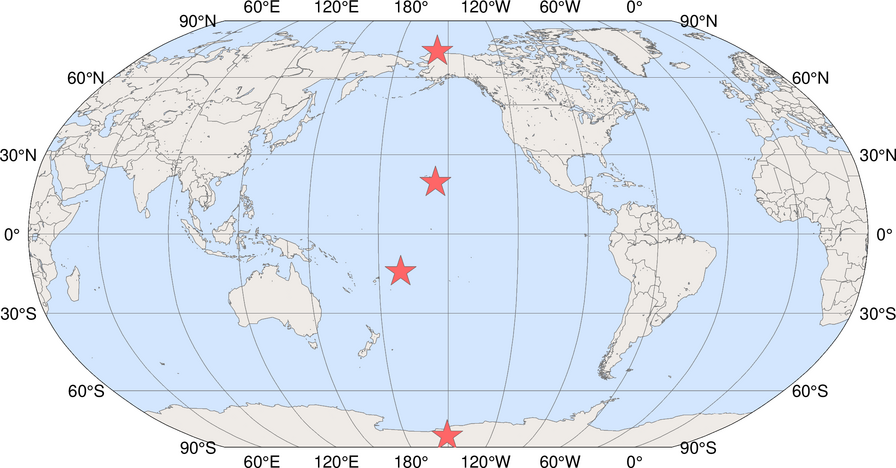The Most Current CO2 Data on Earth | August 2015
Atmospheric CO2 | Mauna Loa ObservatoryNOAA-ESRL | Data available since 1974Scripps CO2 Program | Data available since 1958 |
Period |
Latest Data |
Comparison |
Source |
Last Update |
Daily |
click here or here 398.67 ppm Aug 21 2015** |
396.66ppm Aug 21 2014 |
Scripps CO2 |
|
Daily |
398.24 ppm August 27 2015** |
no comparison is available for 2014 |
NOAA-ESRL
|
|
Weekly |
399.13 ppm August 16 - 22 2015 |
396.81ppm August 16 - 22 2014 |
NOAA-ESRL
|
|
Monthly |
403.70 ppm May 2015 |
401.88ppm May 2014 |
Scripps CO2 | |
Monthly |
401.30 ppm July 2015 |
399.00ppm July 2014 |
NOAA-ESRL
|
|
Annual |
398.60 ppm* 2014 |
396.52ppm* 2013 |
Scripps CO2 |
|
Annual |
398.55 ppm 2014 |
396.48 ppm 2013 |
NOAA-ESRL
|
* Scripps annual CO2 data is calcuated by CO2Now using Scripps monthly CO2 data.
** Averages determined by Scripps and NOAA cover a different 24-hour time period due to time zone differences.
Atmospheric CO2 | Global DataNOAA-ESRL Cooperative Air Sampling NetworkGlobal Data Available Since 1980 |
Period |
Latest Data |
Comparison |
Last Update |
Monthly |
400.11 ppm June 2015 |
397.52 ppm June 2014 |
August 5, 2015 |
Annual |
397.16 ppm 2014 |
395.22 ppm 2013 |
August 5, 2015
|
The Global Monitoring Division of NOAA-ESRL operates staffed atmospheric baseline observatories at the following locations:
- Barrow, Alaska
- Trinidad Head, California
- Mauna Loa, Hawaii
- American Samoa
- South Pole, Antarctica
- Summit, Greenland

Source: NOAA-ESRL GMD
The NOAA-ESRL-GMD CCGG (carbon cycle greenhouse gas group) cooperative air sampling network effort began in 1967 at Niwot Ridge, Colorado (USA). Today, the network is an international effort which includes regular discrete samples from NOAA-ESRL baseline observatories, cooperative fixed sites, and commercial ships.
Air samples are collected through the NOAA-ESRL global air sampling network, including a cooperative program for the carbon gases which provides samples from about 100 global clean air sites, including measurements from ship routes at 5 degree latitude intervals.
Air samples are collected approximately weekly and analyzed in Boulder, Colorado (USA).

Sources: NOAA-ESRL CCGG | High-Resolution PDF

